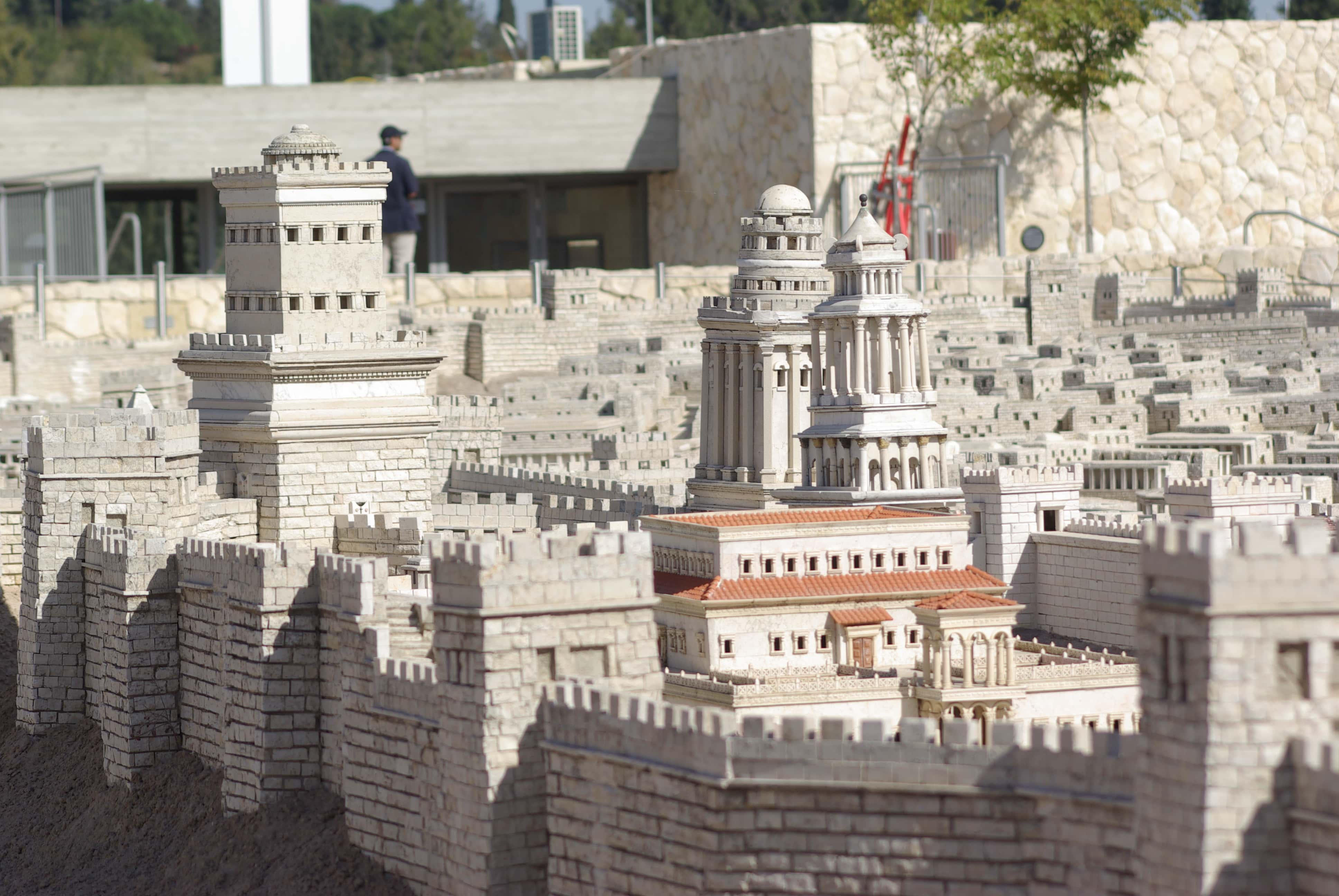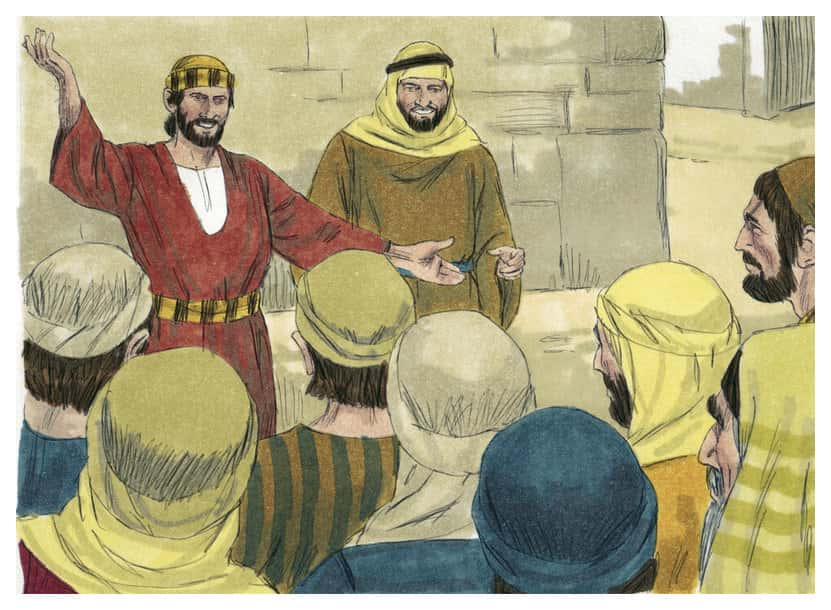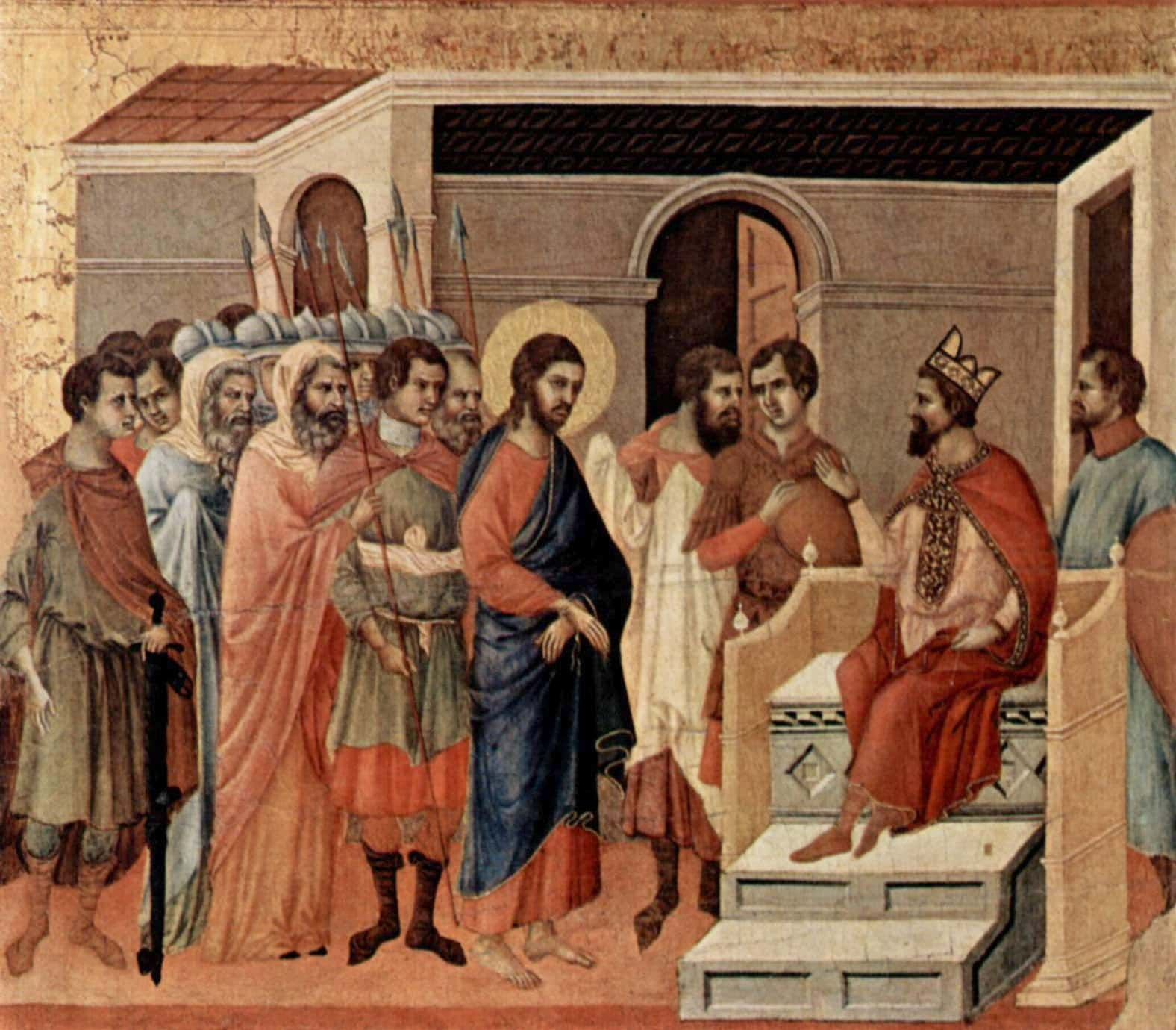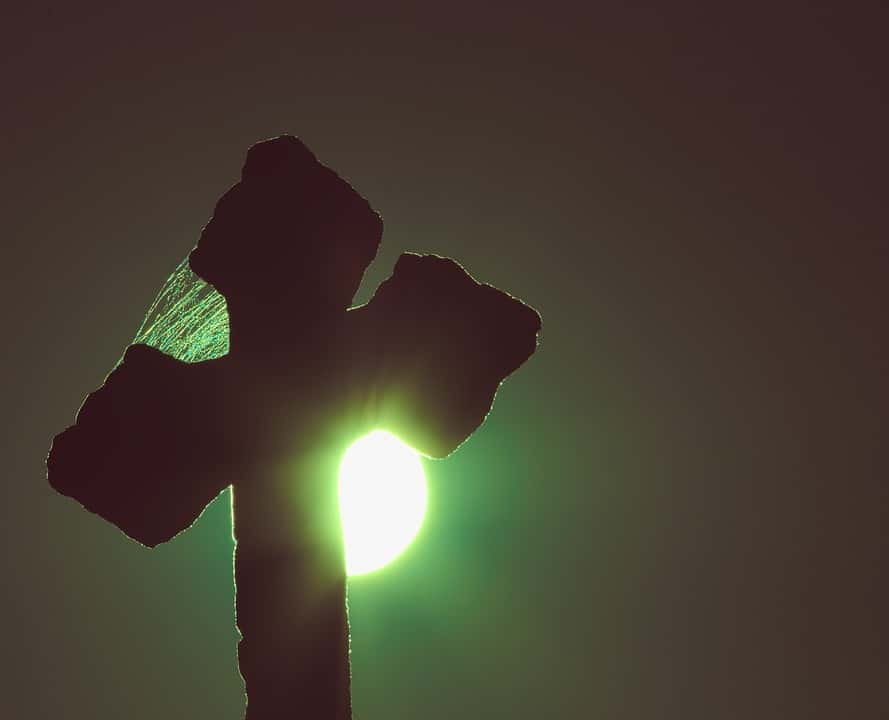To many Christians, King Herod is the bloodthirsty villain of the Bible, the jealous despot who ordered the slaughter of newborn babies throughout his kingdom following the birth of Jesus Christ. To his subjects, he was known as Herod the Great, the paranoid ruler. He burdened them with heavy taxes to sponsor his grand construction ambitions and mercilessly suppressed all forms of dissent. And to his Roman masters, he was little more than a reliably loyal—and wealthy—puppet-king. Throughout history, opinions of Herod the Great have not been…well, great. But there’s more to this New Testament dictator than meets the eye. Here are 43 tyrannical facts about Herod the Great.
1. Hand-Picked
Herod was a client king, which means he was subordinate to a larger ruling government. In Herod’s case, that government was Republican Rome. Indeed, Herod wouldn’t have been king of Judea at all had it not been for the Romans: rather than inherit the throne as kings usually do, Herod was declared king by the Roman senate, with the understanding that he would lead Judea in a decidedly pro-Roman direction.

2. The Family Business
Herod the Great was born in 72 or 73 BCE in Idumea. His father, Antipater, was high ranking official under the king of Judea, Hyrcanus II. Antipater later used his influence with Hyrcanus to have Herod named governor of Galilee.
3. You Have To Share
Herod was declared governor of Galilee in 47 BCE. His older brother, Phasael, was named governor of Jerusalem.
4. Card For Free Release From Detention
Herod and Phasael enjoyed the support of the powerful Roman Republic, but they were frequent targets of the Sanhedrin, a tribunal of 71 rabbis who served as holy judges throughout Judea. At least three times the Sanhedrin sought to condemn Herod and Phasael for their brutal style of governance, but each time the Romans dismissed the charges. It is from this that we get the common phrase “Getting off Phasael-free".
5. We Want A Prenup!
Herod would later strengthen his ties to Hyrcanus and the Romans by marrying Hyrcanus’ granddaughter, Mariamne. There was just one problem: Herod was already married to Doris. Herod resolved the issue by banishing Doris and their son, Antipater.
6. Here Comes Herod Clause
King Herod may have been Herod the Great to his ancient subjects, but his name has been used for one of the modern world’s greatest traps. A “Herod Clause” is a particularly malevolent clause hidden in a contract’s terms and conditions. One 2014 study, sponsored by internet security firm F-Secure, showed that people could even be compelled to give up their first-born children in exchange for free Wi-Fi, all because they failed to read the fine print.
7. All In The Family
Mariamne also happened to be the niece of Antigonus, the revolutionary who staged a coup against Hyrcanus in 39 BCE. Antigonus, with support from the Parthian Empire, overthrew Hyrcanus and ruled over Judea for three years.
8. In Memory
Herod and Phasael stayed faithful to Hyrcanus throughout Antigonus' coup. Unfortunately, Antigonus' men seized Phasael. Desiring to avoid execution, Phasael selected his own fate. In tribute to his brother, Herod would later name a city near Jericho "Phasaelis."
9. Crowning Achievement
With the help of the Romans, Herod was able to put down Antigonus’s revolt. With Phasael and Hyrcanus both eliminated in the strife, this left Herod as the only contender to the throne of Judea. The Romans assented, and Herod claimed the title “basileus,” or king, for himself in 36 BCE.
10. He Of Little Faith
Though the Romans identified Herod as “King of the Jews,” there is some doubt as to the sincerity of Herod’s faith. By blood, he was an Edomite, an Arabic group who had only recently converted to Judaism. Herod’s frequent clashes with the Sanhedrin, not to mention the observant Pharisees and Sadducees who were his subjects, as well as his pro-Roman attitudes and tolerance of other religions, have led some to allege that Herod was not sincerely Jewish. Others have pointed to Herod’s private and public observance of Jewish law, and his works in building holy buildings as evidence of his faith. The subject remains up for debate.
11. No Place Like Rome
Herod’s family had always been great friends to the Romans. His father, Antipater, had served as an official under the Roman emperor Pompey, and cannily shifted alliances when Julius Caesar overthrew Pompey in 47 BCE. When the elder Antipater came to Caesar’s aid at the Siege of Alexandra, the Roman emperor rewarded him with full Roman citizenship, the title of Procurator of Judea, and a lifetime tax exemption.
12. BFFs
Herod’s best friend was Augustus’ minister, Marcus Vipsanius Agrippa. Herod frequently traveled to Italy to visit Agrippa, and the two shared ownership of a copper mine in Cypress. Many of Herod’s descendants were named after his Roman bestie.
13. Faster, Higher, Stronger
To further demonstrate his Greco-Roman bona fides, Herod agreed to serve as the president of the Olympic Games, beginning in 12 BCE. Herod’s financial support of the games ensured that they would continue at a time when their popularity and finances were dwindling.
14. Building Sites
Once he had established himself as king in Judea, Herod commenced a series of massive construction projects. Utilizing resources procured from burdensome taxes, Herod constructed large cities, including Caesarea and Sabaste, as well as an extravagant palace for himself at Herodium. Parts of Herod’s buildings are still standing today.

15. Last Man Standing
At Hebron, in the West Bank, stands Herod’s Cave of the Patriarchs. The 2,000-year-old temple is the oldest prayer structure in the world, and the oldest building still used for its intended purpose. It is said to stand on the burial site of the Jewish patriarch Abraham. With its six-foot-thick stone walls, the Cave of the Patriarchs is the last of Herod’s buildings to remain fully intact.
16. King Of The Hill
The greatest of Herod’s buildings, though, was the Temple on the Mount at Jerusalem. Herod employed a crew of 1,000 priests from Rome, Egypt, and Greece to work on the temple; though they finished the main building within two years, work continued on the temple for another 80 years after that. The temple covered 35 acres and featured walls that were more than nine stories high. The temple was destroyed in 70 CE, but parts of it remain: the foundations now form what is known as the Wailing Wall.
17. Court Is Adjourned
The Temple also featured “the Court of the Gentiles,” essentially an open-air bazaar where guests to Jerusalem could shop for souvenirs and trade for foreign currencies. The Court of the Gentiles was the site of the famous “Jesus and the Money-Changers” story which appears in all four Gospels.

18. Like A Limestone Cowboy
The buildings built under Herod’s reign feature several distinct, uniform features. They are almost all built of meleke limestone, dressed in a particular local style, and tend to combine features of both palaces and fortresses. In strict accordance with Jewish law, no statues or carvings of humans or animals would be found either inside, or on the building itself. The characteristics of Herod’s buildings were so distinct that the term “Herodian Architecture” was created to describe those buildings and buildings like them.
19. Never Herod Of Him
Though he’s remembered as one of the biggest villains of the Bible, Herod is only mentioned in the Gospel of Matthew. The other three gospels, Mark, Luke, and John, don't mention King Herod or the tragic incident involving the Innocents at all.
20. Artistic License
The Slaughter of the Innocents is never referenced by Josephus as well. Being Herod's primary biographer and one of his biggest critics, Josephus would have hardly overlooked such a significant atrocity committed by Herod. Most scholars now concur that the widespread slaughter of the Innocents was contrived by Matthew to instill prophetic importance to Christ's birth.
21. Didn’t Make The Cut
King Herod is never referred to in the Gospels of Mark, Luke, or John, but he is mentioned in the Gospel of Bartholomew. In this apocryphal text, omitted from the Bible, Jesus ventures into the underworld post his crucifixion and liberates everyone except Cain, Judas, and King Herod.
22. A Cult Of His Own
Ironically (given his antipathy to Jesus), Herod himself attracted religious followers. “Herodians” sought to establish a theocracy in Judea, and even claimed Herod, not Jesus, was the Messiah. It is believed by some scholars that the apostle Paul began as a Herodian.
23. The Opposite Of Christmas
According to tradition, December 28 was the day Herod ordered the slaughter of the Innocents. To mark the terrible event, medieval Christians in England celebrated “Childermas Day,” or “Holy Innocents Day".
24. Boxing Day?
In the Childermas celebrations, English parents would discipline their children to remind them of the harsh actions of King Herod. And you thought a lump of coal was bad?
25. Learn From The King
Childermas was widely considered a day of bad luck, not unlike our modern Friday the 13th. Buildings or marriages begun on Childermas were sure to fail. King Edward IV even demanded his 1461 coronation be moved to the following day, so as not to tempt fate.
26. Pranksgiving
Despite its bad rep in England, Spanish Christians were considerably more relaxed about Holy Innocents Day. In Spain, the day became the equivalent of April Fool’s Day. Throughout the Spanish-speaking world, December 28 continues to be a day for planning elaborate pranks or pitching large-scale flour fights.
27. I Told Ya So
After 35 years of constant searching, a team of Israeli archaeologists led by Professor Ehud Netzer uncovered King Herod’s tomb in 2007. It probably shouldn’t have taken Netzer that long: the tomb was discovered exactly where the historian Josephus said the tomb was located.
28. No Body Home
Though Herod’s tomb has been discovered in the ruins of the ancient city of Herodium, one mystery remains: where is Herod’s body? When Netzer opened Herod’s tomb, all he found was a broken sarcophagus, but no remains.
29. Paternal Instincts
No one knows for sure how many children Herod had. Records from that time are spotty, and the births of daughters especially tended to go undocumented. Herod had at least 14 children that we know of, by eight of his ten wives.
30. The Best In The Business
A man with as many enemies as Herod needed security. Herod’s personal guard comprised of 2,000 men, taken from all over the known world. Among them were Germanic warriors, Thracians, and a squad of Celts who had once served Cleopatra.
31. Star-Crossed
According to Josephus, Herod's demise occurred on the eve of Passover and was immediately preceded by a lunar eclipse.
32. Revisionist History
While most scholars believe Herod's demise occurred in 4 BCE, some have proposed that Herod may have departed as early as 1 BCE. Some scholars suggest that Herod's offspring could have advanced the date of his demise to coincide with their own periods of rule, thereby enhancing their legitimacy as leaders.
33. Scheduling Issues
All of these timeline issues create some major problems for the Christian calendar. While you might assume that Jesus was born in Year Zero—between 1 BCE and 1 CE—from Sunday School lessons or the like, most historians suggest that he would’ve been born between 6 and 4 BCE, which would put him right in line with Herod’s final years. That being said, the inconsistency does give weight to the belief that the so-called "Slaughter of the Innocents" event never actually took place.
34. Sow What?
In his time, Herod was considered a great builder. Although Herod has been gone for more than 2000 years, he continues to leave his mark on the Judean landscape today. Herod’s palace at Mount Masada was excavated in 1963. Among the discoveries was a cache of seeds. In 2005, one of those seeds was planted, blossoming into a Judean date palm, a species which had been considered extinct for more than 800 years.
35. Gender Reveal
The date palm, named “Methuselah,” is considered the oldest germinated plant in the world. Much to the scientists’ disappointment, Methuselah turned out to be a male tree, meaning it cannot give off fruit, or lead to the growth of more Judean date palms.
36. Turning Over a New Leaf
In 2015, more seeds from Herod’s palace were planted. These turned out to be female Judean date palms, which scientists are hoping will be pollinated by Methuselah. King Herod might just have played a major role in reviving an ancient species that was previously extinct!
37. Father Of The Year
After Mariamne's departure, Herod invited Antipater back to Judea and declared him as the successor to his kingdom. Later, he decided upon his execution. Didn't he ever consider a simple game of catch in the yard?
38. Behead Of The Family
Herod’s reign was marked by discontent among his subjects. As his reign wore on, Herod became increasingly paranoid and began to suspect even those closest to him of conspiring to have him deposed. From 23 BCE to 6 BCE, Herod ordered the executions of Mariamne, her grandfather, her mother, her brother, the two sons he and Mariamne shared, as well as his eldest son, Antipater, all on suspicion of infidelity or conspiracy.

39. Throwing The Baby Out With The Bathwater
There comes a time in every king’s life when he has to wonder “How will I be mourned?” Paranoid Herod suspected his subjects hated him, and indeed they did, which made him very self-conscious. Herod gave clear instructions that, should his life end, a group of well-known public figures should be harmed significantly; hence, a widespread feeling of public sorrow and mourning would envelop Judea.
40. Asking Too Much
Despite the king’s orders, Herod’s son and sister refused to carry out the assassinations. Following Herod's departure from this world in 4 BCE, those popular Judean diplomats continued to lead wealthy, fulfilling lives, while the people of Judea exhibited minimal mourning.
41. That’s So Sweet
While the tragic elimination of the Innocents is indeed a negative spotlight, perhaps the oddest tale shared about King Herod was that he preserved his wife, Mariamne I, in honey after her demise. Mariamne was executed on her husband’s orders, but Herod found her to beautiful to be buried and kept her preserved body for seven years. Some even claimed Herod had er, relations, with the body.
42. Not the Way I Heard It…
In another version of the story, the preserved body was that of a Hasmonean princess who threw herself from a roof rather than marry Herod and fulfill his wish for royal legitimacy.
43. You Get What You Give
Herod endured paranoid delusions, rage, and arteriosclerosis, yet succumbed to a mysterious and agonizing illness in 4 BCE that modern doctors are yet unable to identify. At one point, the pain was so unbearable, the king tried to end his own life. The illness came to be known, among the Judean people, as “Herod’s Evil".


















































